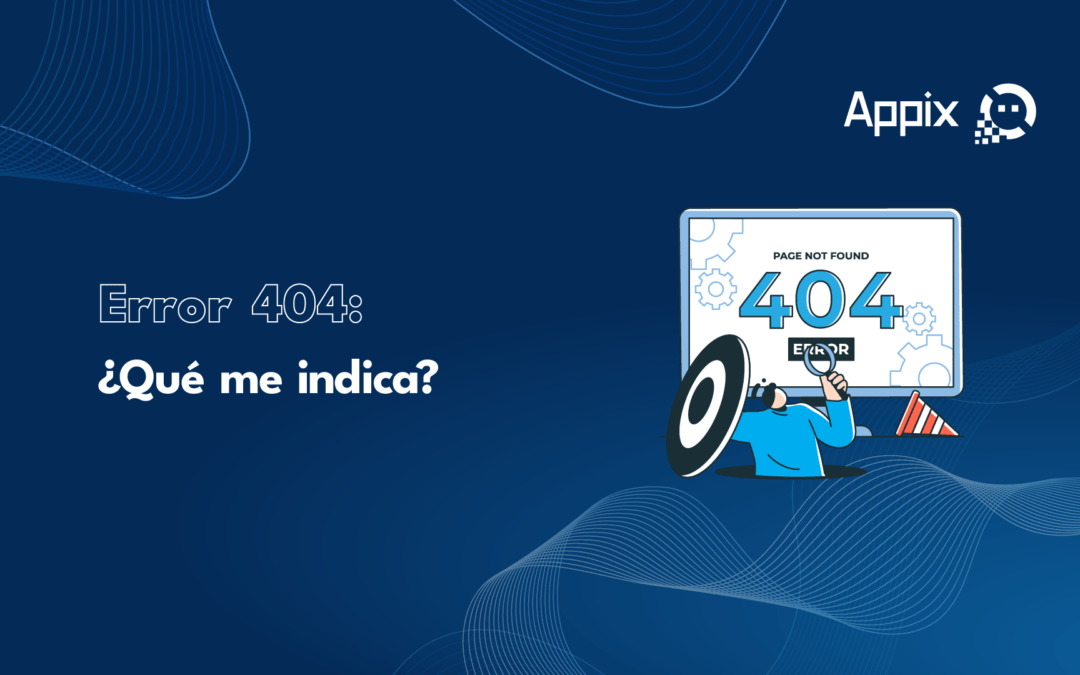Cuando navegas por una web, es posible que te hayas encontrado con un mensaje “Error 404“. Este es un código de estado HTTP, normalmente puede ser frustrante, tanto para los usuarios como para los desarrolladores. Pero, ¿qué significa exactamente y qué indica cuando aparece? En este blog te compartimos todo acerca de ello, sigue leyendo.
¿Qué es el Error 404?
El Error 404 es un código de estado HTTP que indica que el servidor no pudo encontrar el recurso solicitado. En términos simples, el servidor web ha recibido la solicitud del navegador, pero no puede localizar la página o el archivo que se busca. Este error es uno de los muchos códigos de estado HTTP, cada uno con su propio significado específico en el contexto de la comunicación entre servidores y navegadores.

Causas Comunes del Error 404
- URL Incorrecta: Una de las razones más comunes para el Error 404 es una URL mal escrita. Los errores tipográficos, la inclusión de caracteres especiales no permitidos, o el uso de mayúsculas y minúsculas incorrectas pueden hacer que el servidor no pueda localizar la página solicitada. Es esencial que las URLs sean precisas y se mantengan consistentes en todo el sitio web.
- Página Eliminada: Las páginas web no son permanentes y pueden ser eliminadas o reemplazadas con el tiempo. Si una página es eliminada sin una adecuada redirección, los usuarios que intenten acceder a ella mediante enlaces antiguos encontrarán un Error 404. Esto suele ocurrir durante la reestructuración de sitios web o al actualizar el contenido.
- Enlace Roto: Los enlaces rotos son enlaces en una página web que apuntan a recursos que ya no existen. Esto puede ser el resultado de una URL incorrecta, una página que se movió sin actualizar el enlace, o un recurso externo que ya no está disponible. Los enlaces rotos no solo generan errores 404, sino que también afectan negativamente a la experiencia del usuario y al SEO del sitio.
Cómo Manejar el Error 404
Para los desarrolladores web, manejar los errores 404 de manera efectiva es crucial para una buena experiencia del usuario. Aquí hay algunas estrategias:
- Página de Error Personalizada: Diseña una página de error 404 personalizada que sea amigable y útil. Ofrece opciones para que el usuario regrese al inicio, busque en el sitio o se comunique con soporte.
- Redirección: Implementa redirecciones 301 para las URLs que han cambiado de ubicación. Esto ayuda a mantener el tráfico y mejorar la experiencia del usuario.
- Monitoreo y Mantenimiento: Utiliza herramientas de análisis web para monitorear los errores 404 y solucionar enlaces rotos o contenidos eliminados de manera oportuna.
Conclusión
El Error 404 es una parte inevitable de la navegación web, pero su impacto puede ser minimizado con una gestión adecuada. Entender sus causas y cómo manejarlo efectivamente no solo mejora la experiencia del usuario, sino que también contribuye a la integridad y el éxito de tu sitio web. Así que, la próxima vez que te enfrentes a un Error 404, recuerda que es una oportunidad para optimizar y perfeccionar tu presencia en la web. Te invitamos a visitar nuestro blog para seguir aprendiendo sobre desarrollo web

